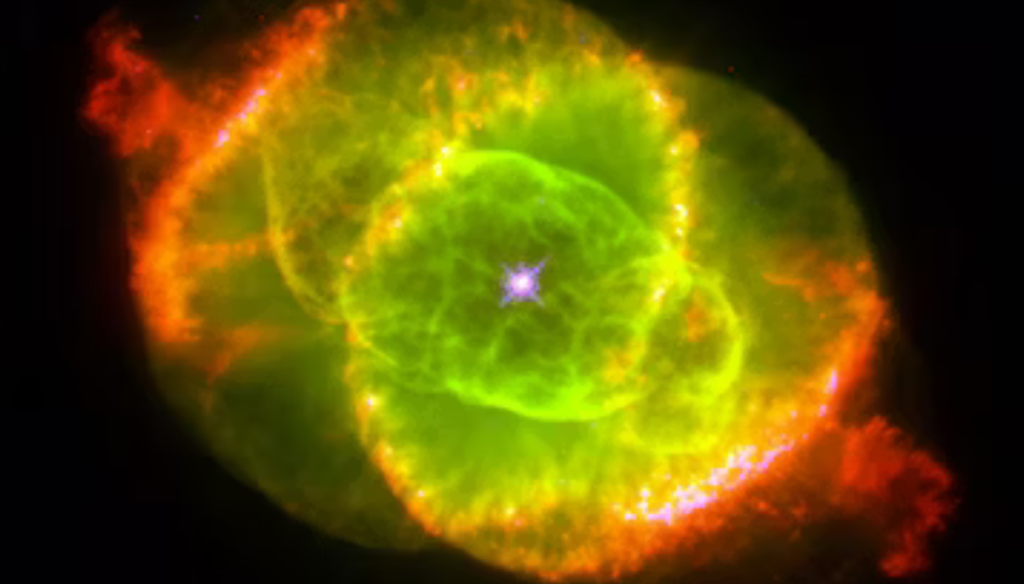Amazing Ring Nebula photos from the Webb telescope
The James Webb Space Telescope (JWST) has captured stunning new images of the Ring Nebula, also known as Messier 57, a planetary nebula formed from dying stars expelling their outer layers into space. The images, released by an international team of astronomers, showcase the nebula’s intricate and ethereal beauty with unprecedented detail, revealing its donut-like structure of glowing gas. Located approximately 2,600 light-years away in the constellation Lyra, the Ring Nebula has been a well-known object visible all summer long.

The images taken by JWST’s NIRcam on August 4, 2022, display the main ring of the nebula surrounded by a faint halo and various delicate structures. The interior of the ring is filled with hot gas, with the central star, which ejected the material, visible at its core, with a temperature exceeding 100,000 degrees. The nebula was ejected only about 4,000 years ago, and the team also observed several hundred linear features pointing toward the central star, the origin of which remains uncertain.
The nebula’s complexity and variety of shapes, including glowing rings, expanding bubbles, and wispy clouds, are what make planetary nebulae truly awe-inspiring. The JWST images reveal large numbers of small clumps within the ring, containing molecular hydrogen and behaving like comets the size of planets. These clumps, about 20,000 in number, are much cooler and denser than the rest of the nebula, representing about half of all the gas in the region.
The central star, the brightest in the image, is extremely hot and is in the final stages of its life. It has used up all its fuel and is cooling down, destined to become a white dwarf, an inert remnant of a star. The JWST’s high-resolution images also allow astronomers to study the inner region around the central white dwarf in exquisite detail, shedding light on the processes behind planetary nebulae’ formation and evolution.
In summary, the James Webb Space Telescope’s latest images of the Ring Nebula offer a mesmerizing and unprecedented view of the celestial wonder, providing valuable insights into the life cycle of dying stars and the formation of planetary nebulae.


